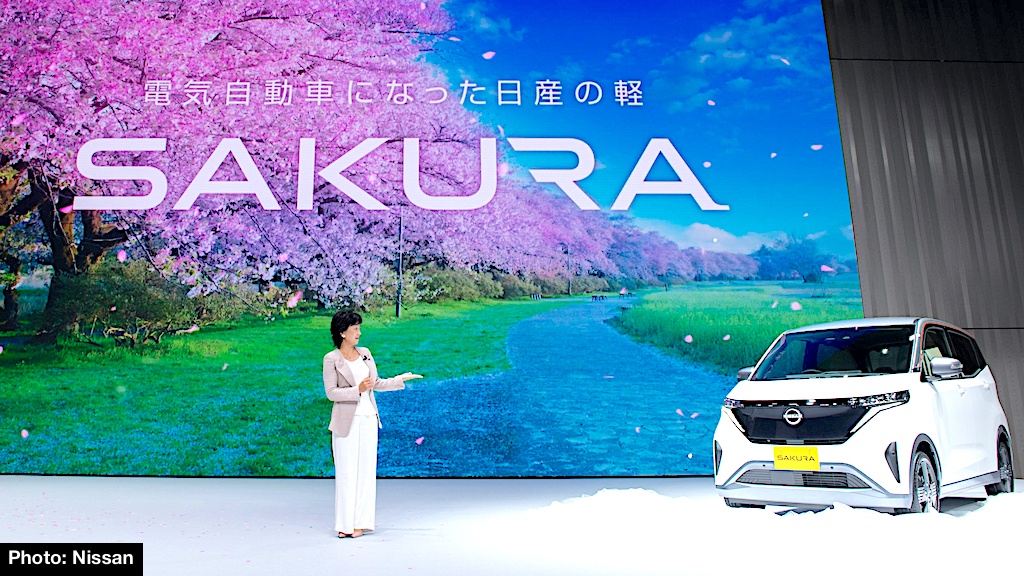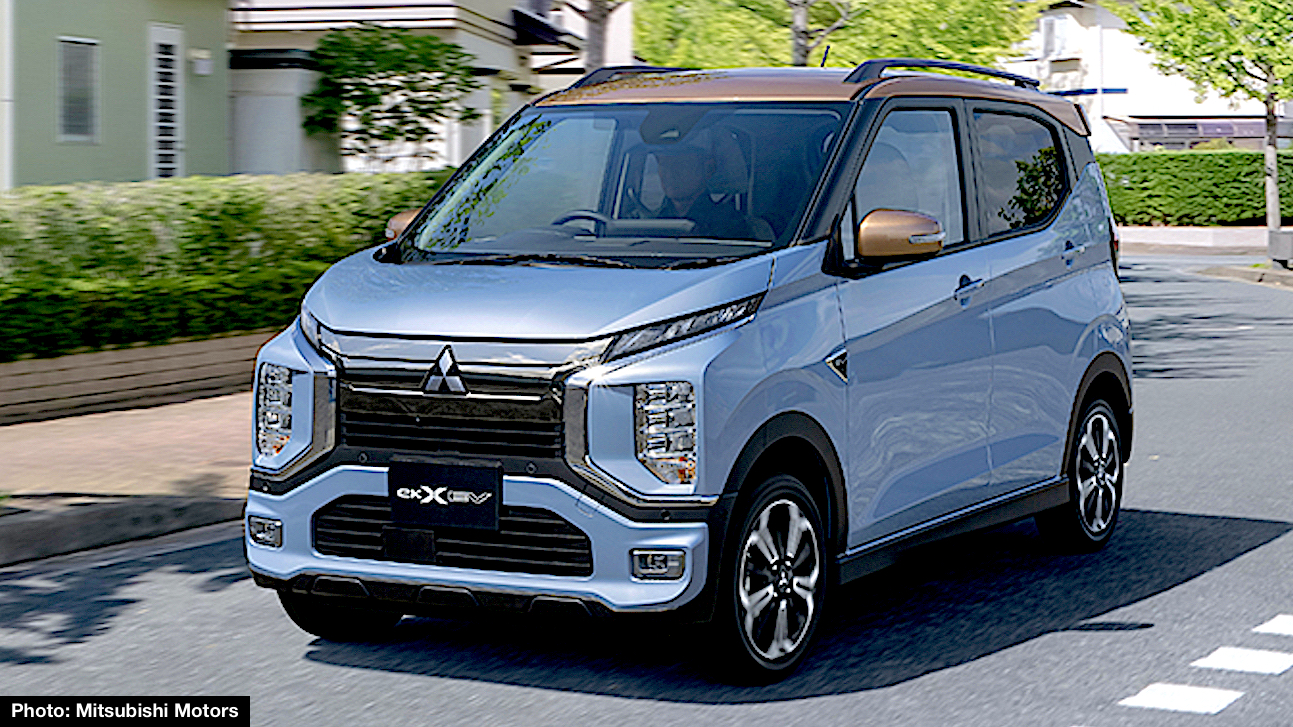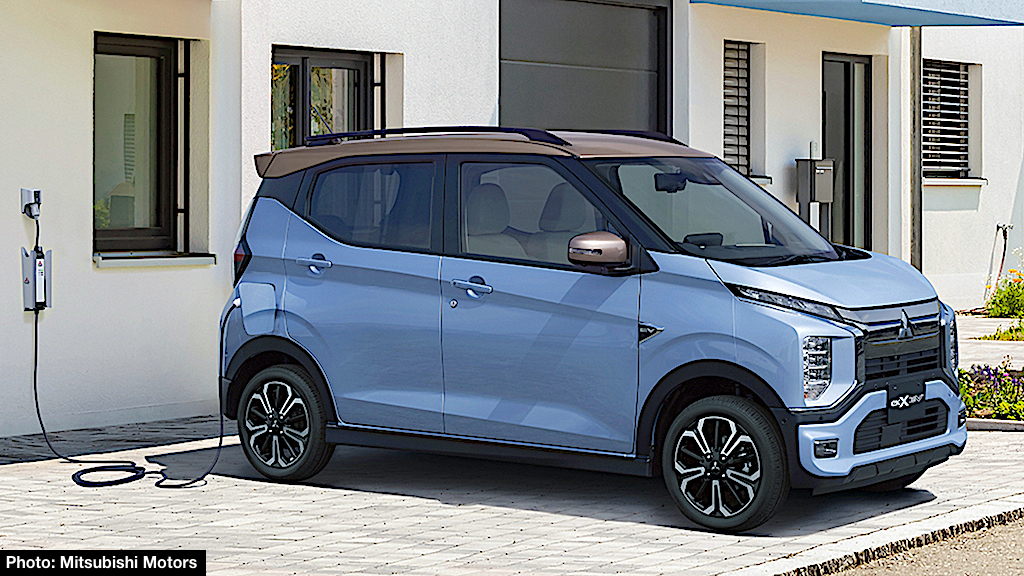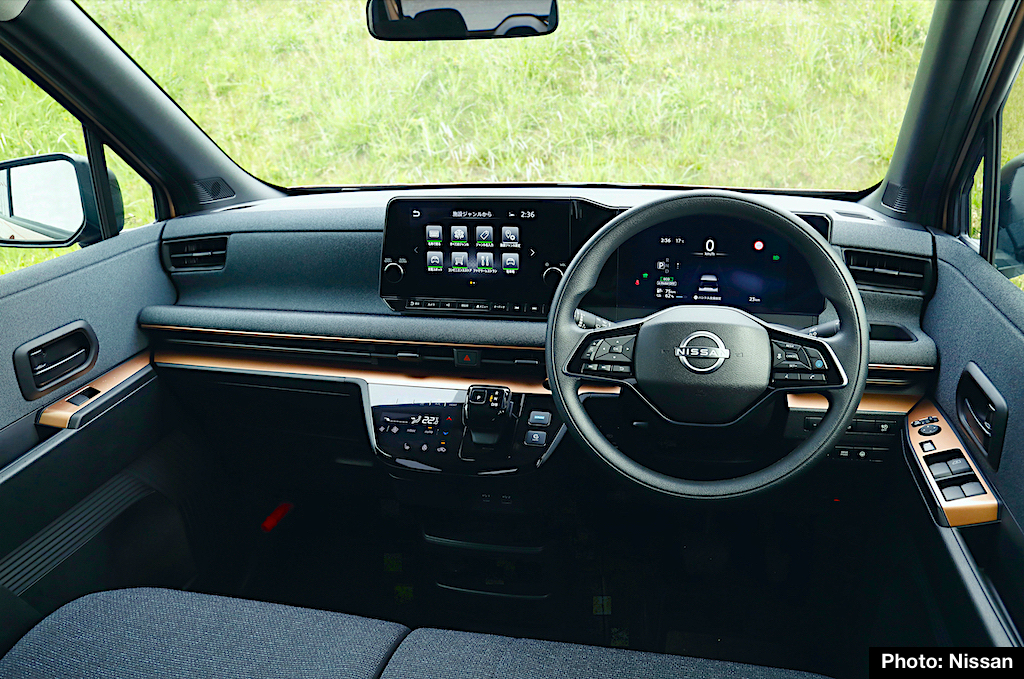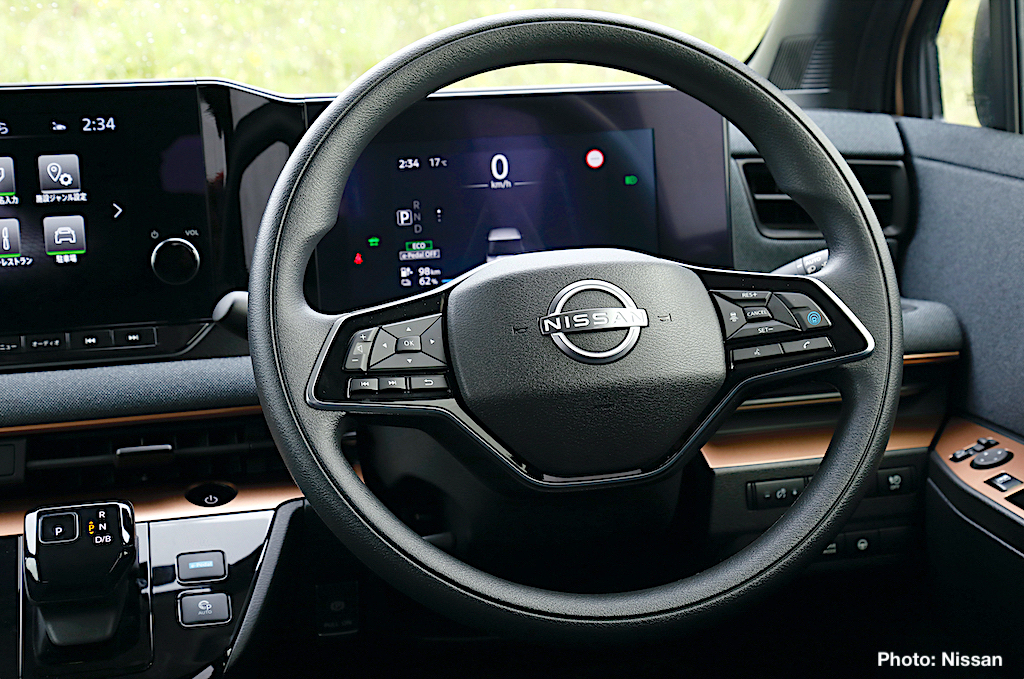By Steve & Tamami Laser
For more than a decade, NMKV, the Nissan and Mitsubishi joint venture plant in Japan, has produced a wide variety of gas-engine mini vehicles for both brands. And now, all-electric Kei car siblings are ready to join the family, with the introduction of the new Nissan Sakura and Mitsubishi eK X EV.
A line-off ceremony was held at the Mitsubishi Motors Mizushima Plant in Kurashiki City, Okayama Prefecture, where the new EVs are produced. Makoto Uchida (above left), president and CEO of Nissan, Takao Kato (right), president and CEO of Mitsubishi Motors, Mitsuro Antoko, president and CEO of NMKV, plant employees, and invited guests celebrated the start of production for the new EVs.
A separate reveal for the Sakura was livestreamed from the Nissan Gallery at the automaker’s Global Headquarters in Yokohama. “The all-new Sakura follows the LEAF and Ariya as a mass-market EV,” said Asako Hoshino (above), Nissan Executive Vice President. “We believe it will be a gamechanger for the Japanese market and will make EVs much more accessible to customers in Japan.”
The new EVs are said to provide both sufficient range for everyday use along with affordable prices. They’re designed to deliver smooth and powerful EV driving, a quiet and comfortable ride, along with advanced driver assistance systems and connectivity.
Named for the cherry blossom, Sakura presents a sleek look, that brings to mind Nissan’s IMk concept EV introduced at the last Tokyo Motor Show. Both incorporate “Japanese DNA” into the design, with the blending of traditional shapes and textures, epitomized by mizuhiki, a thin twine made of Japanese rice paper.
Meanwhile, the styling for the new Mitsubishi eK X EV is similar to the gas-engine eK X, with the automaker’s signature Dynamic Shield blended with crossover cues to project a sense of power and toughness.
Sakura and eK X EV, equipped with a 20 kW lithium-ion battery, have a rage of up to 180km per charge (based on WLTC* Japan cycle). An electric motor produces 47kW and 195 Nm of torque. Mitsubishi says that its research indicates approximately 80 percent of Kei car users drive 50km or less per day, estimating that most users can drive for two days without recharging. The battery can also be used as a mobile power source during emergencies (with V2L adapter) and provide a day’s worth of electricity to a home (with a V2H connection).**
Sakura’s four-passenger cabin features a contemporary look with “sofa design” fabric-trimmed seats and available copper-colored trim. A slimmed-down drive battery located under the floor helps to provide ample room for both passengers and cargo. The driver is treated to a twin-spoke steering wheel, a 7-inch Advanced Drive Assist Display, electric shifter, and Eco, Standard and Sport drive modes. With e-Pedal Step, one-pedal operation is possible, for acceleration, and braking when easing off the pedal. Deceleration also activates regenerative braking to charge the battery.
The available 9-inch NissanConnect navigation system includes route setting based on charging needs, emergency SOS service, and wireless Apple CarPlay®. Available high-tech features include the ProPILOT driver-assist system, and ProPILOT Park. The latter is designed to automatically control steering, acceleration, braking, and shifting while parking.
Nissan and Mitsubishi established NMKV in 2011 to specialize in the planning and development of minicars. The jointly developed gas-powered Nissan Dayz and Mitsubishi eK Wagon were launched in June 2013, followed by the Nissan Dayz Roox and Mitsubishi eK Space in 2014. The successful collaboration reached 500,000 combined units the following year. New generation gas models rolled out in 2020, called the Nissan Roox and Mitsubishi eK X Wagon.
*WLTC, or Worldwide harmonized Light duty Test Cycle, is an internationally recognized test cycle that is composed of urban, suburban, and highway driving modes with average usage ratios.
**Assuming 12kW per day, the average power consumption for general households in Japan
Notes: Features and specifications for Japan market models are subject to change without notice.
News sources and photos courtesy of Nissan Motor Co., Ltd., and Mitsubishi Motors Corp.
Story (commentary) © 2022 CarNichiWa.com

